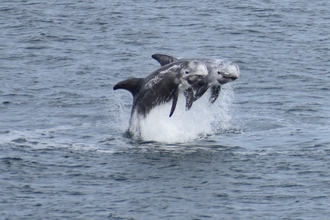The idea of winter doesn’t create images of highly productive environments. On land it is the season where a lot of plants die back and many species of animals go into hibernation. Animals that live in the intertidal zone, between the high tide mark and low tide, do not have the ability to hibernate due to the constant changing environments brought about by the tidal cycle and ever-changing weather conditions.
You would not be on a rocky shore if you didn’t see any barnacles. There are several species of barnacles found on our shores and between them they cover much of the intertidal zone on both exposed and sheltered shores. It is a common misconception that barnacles are related to molluscs, like mussels, who also attach themselves to rocky structures. In reality, barnacles are actually a crustacean like crabs and lobsters.













